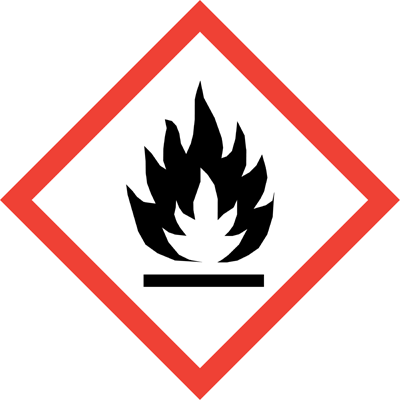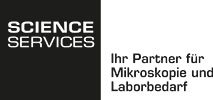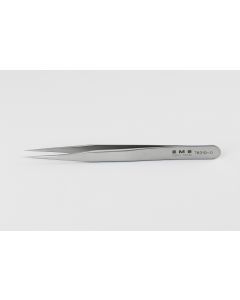HPMA Acryl Einbett-Kit, wasserlöslich
E14220
Produktdetails
Beschreibung
The use of water soluble resins for embedding media has been studied primarily by investigators interested in cytochemical applications. By avoiding the denaturation and extraction of materials which occurs during the usual hydration procedures, biochemical activity may be substantially preserved by
the use of water soluble embedments. Examples of the use of water soluble resins in cytochemical applications are numerous and include Vazquez-Nin and Bernhard, J., Ultrastruct. Res. 36:842, 1971; and Bernhard and Leduc, „Electron Microscopy“, Proc. 5th Intern. Cong. Electron Microscopy, Vol. 2,
p.L. -4, Academic Press, NY 1962. Its has been clearly demonstrated that aldehyde fixed materials embedded in water soluble resins are reactive to a variety of enzymes and specific stains.
2-hydroxypropyl methacrylate (HPMA) constitutes one such water soluble embedment (Leduc and Holt, 1965). It appears to be among the best of these materials in terms of sectioning properties, stability under electron bombardment, and preservation of original tissue reactivity.
Several variations exist among the procedures currently in use for embedding tissue in HPMA. A general
procedure is described below. A few modifications will also be mentioned.
Fixation
Minced tissue <0.5mm 3 were fixed:
| 15 min. | 1.25-5% glutaraldehyde buffed at pH 7.4 at 0-3°C |
| 30 min. | 1.25-5% glutaraldehyde buffed at pH 7.4 at 0-3°C |
| 4 hrs. | 1.25-5% glutaraldehyde buffed at pH 7.4 at 0-3°C |
| 30 min. | 4% formaldehyde containing 0.25m sucrose at pH 7.4 |
| 16 hrs. | 4% formaldehyde containing 0.25m sucrose at pH 7.4 |
| 1 hr. | Millonigs-OsO 4 fixation |
To Prepare a Prepolymer
Add 0.03 grams Benzoyl Peroxide paste to 30 ml HPMA in a beaker. Heat to about 90°C or until it starts to steam, while stirring constantly. As soon as it starts to steam, plunge the beaker into an icebath to rapidly cool it. The process can be repeated several times until the consistency of the prepolymer
is that of free flowing syrup. Then add 20% water to the prepolymer and stir thoroughly.
Dehydration And Infiltration at 1-3C
| (1) HPMA (85%) | 1 hour |
| (2) HPMA (85%) | 1 hour |
| (3) HPMA (97%) | 1 hour |
| (4) HPMA (97%) | 1 hour |
| (5) Prepolymerized HPMA (97%) | 1 hour |
During the dehydration and infiltration process the tissue should be stirred constantly to achieve desirable infiltration.
Bits of infiltrated tissue are placed in gelatin capsules containing prepolymerized HPMA. The HPMA may contain as much as 10% H 2 O to reduce the brittle quality of the final blocks. The capsules should be closed and should contain as little air as possible.
Final polymerization may be achieved by long wave UV irradiation (over 3150 A wavelength) at 3°C for 12-24 hours, or by heating to 60°C for an appropriate time (usually 48-72 hours).
Among the variations on this method are the use of the cross-linking agent, divinyl benzene, and more than 10% H 2 0 in the HPMA mixture (Pease, 1964). Also Kushida (1970) modified the recipe using Polyethylene Glycol to produce a lower viscosity resulting in faster penetration, and easier polymerization.
Because of its sensitivity to light, even in the absence of a catalyst, it is advisable to store HPMA in the dark.
The monomer HPMA may cause allergic reactions to the skin with prolonged exposure.
References: Leduc, E.H. and Holt, S. J., J. Cell Biology 26:137-55 (1965).
Pease, Histological Techniques for Electron Microscopy, 2nd Edition, p 124, Academic Press, NY (1964).
Weitere Informationen
| Anwendung |
LM
|
|---|---|
| Gebotszeichen |
Augenschutz benutzen

Handschutz benutzen

|
| Signalwort |
Gefahr
|
| Symbol GHS |
GHS01

GHS02

GHS07

|
| Bestandteile | 450ml HPMA, 15g Benzoyl Peroxide Paste |
| Verpackungseinheit | Kit |
| Eigenschaft |
wasserlöslich
|
| Versandklasse |
Standard
|
| Lagertemperatur |
RT
|
| Hersteller |
EMS
|










